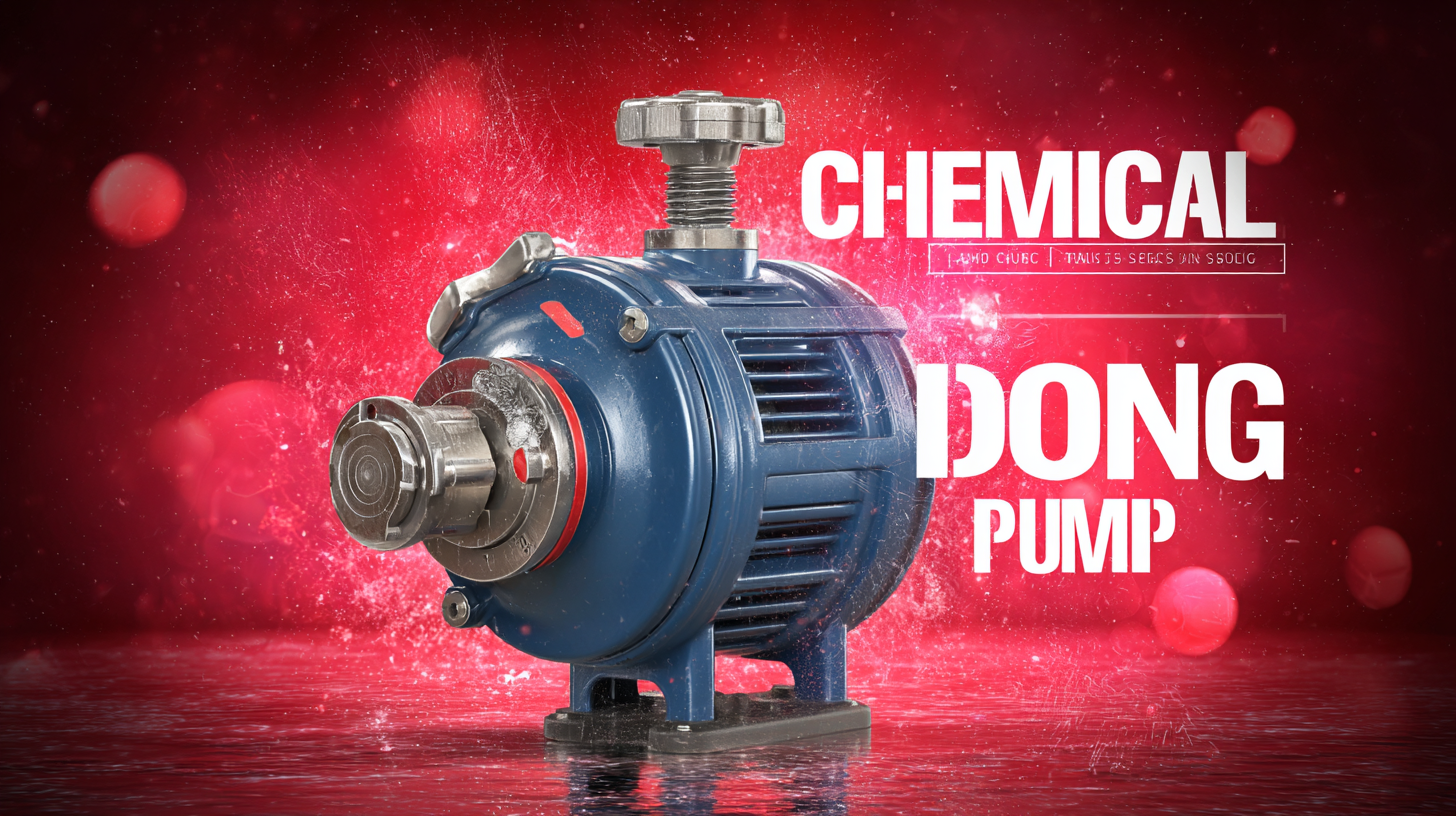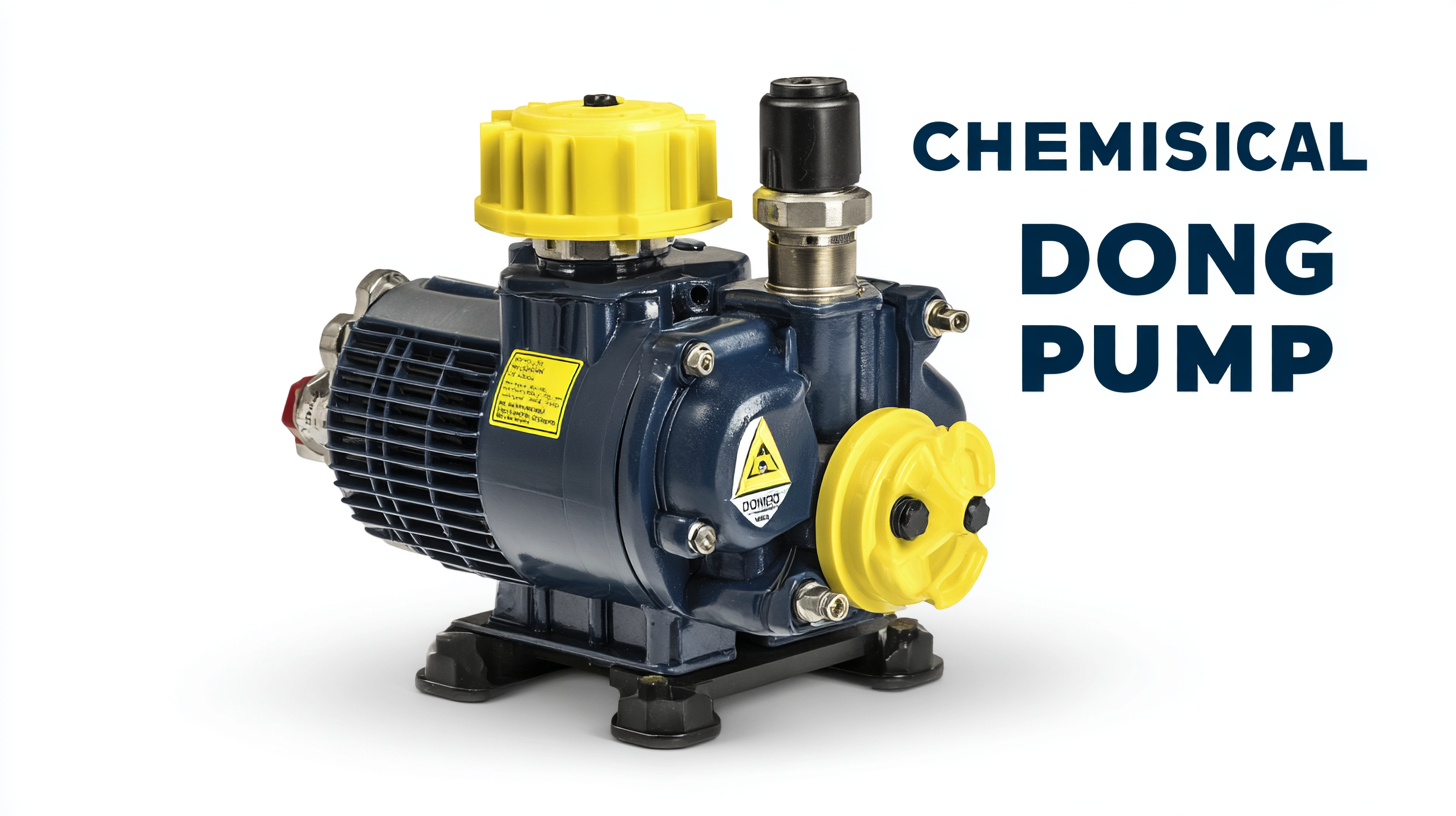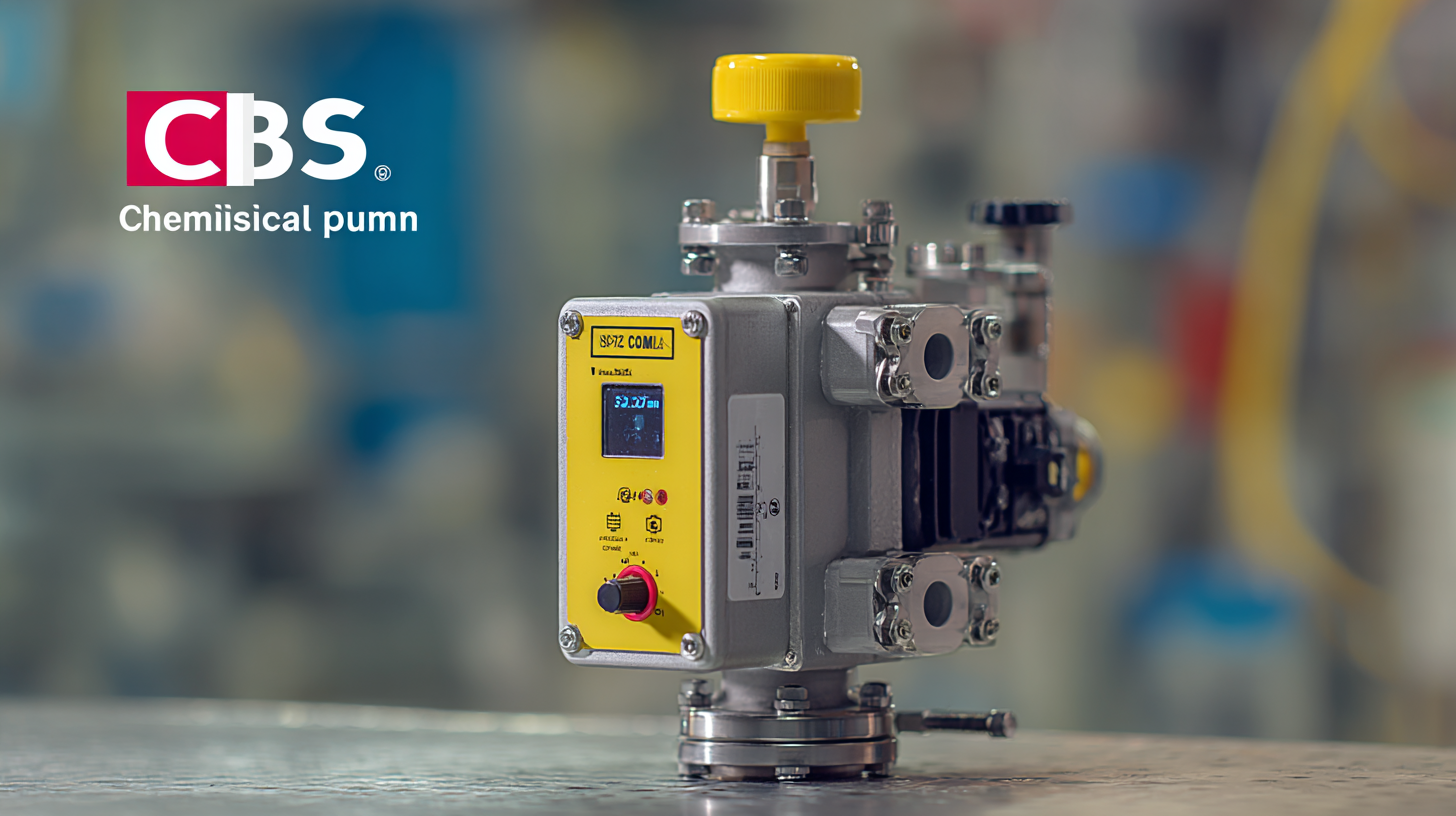

In the ever-evolving landscape of industrial processes, the selection of an appropriate Chemical Dosing Pump is pivotal for ensuring efficiency and precision in chemical handling. According to a recent market report by Grand View Research, the global chemical dosing pump market is projected to reach USD 8.5 billion by 2025, growing at a CAGR of 5.3%. This growth underscores the increasing reliance on advanced pumping solutions across various sectors, including water treatment, oil and gas, and pharmaceuticals.

Choosing the right pump not only impacts operational efficacy but also compliance with environmental regulations and safety standards. As organizations prioritize sustainability and cost-effectiveness, understanding the intricacies of chemical dosing pump technologies and the reputation of suppliers becomes essential for making informed procurement decisions. These factors ultimately play a crucial role in achieving optimal performance in chemical dosing applications.
When selecting a chemical dosing pump, it's essential to understand the different types available and their specific applications. Metersing pumps, for instance, are designed to deliver consistent flow rates with high accuracy, making them ideal for chemical treatment processes. The steady-state accuracy, repeatability, and linearity of these pumps are crucial factors, especially in industries where precise chemical dosing is critical for safety and efficiency.

When choosing the right pump, consider the specific requirements of your application. Tips for selection include evaluating the chemical compatibility of materials used in the pump, determining the desired flow rate, and assessing the accuracy needed for your operation. Always look for units that offer smart monitoring capabilities to enhance operational efficiency and safety.
Additionally, keep an eye on emerging technologies in the dosing pump market. Innovations like digital dosing solutions and advanced peristaltic pump technologies can significantly improve long-term performance and maintenance. Integrating these modern solutions can lead to better control and improved outcomes in chemical dosing operations.
When selecting a chemical dosing pump, understanding your flow rate requirements is crucial. Flow rate determines how much chemical solution needs to be delivered over time, and it varies greatly depending on the application—whether it's water treatment, agriculture, or industrial processes. Industry standards suggest that a flow rate of 1 to 50 gallons per hour (GPH) is common for various applications. Calculating the ideal pump capacity involves considering both the required flow rate and the maximum allowable pressure drop within your system, as these factors directly impact pump performance and longevity.

Tip: To accurately assess your flow rate needs, take the time to analyze your system's total demand. Factor in potential fluctuations in usage that could necessitate a larger or more variable capacity pump. For instance, a report by the Water Environment Federation indicates that underestimating flow demands can lead to insufficient chemical dosing, affecting system efficiency.
When determining the right pump, also consider the chemical characteristics of the solution—viscosity, temperature, and corrosiveness—since these properties can influence the pump's capability. According to a study published by the American Institute of Chemical Engineers, matching the pump material and design with the chemical properties is essential for avoiding maintenance issues and ensuring optimal performance.
Tip: Always consult with pump manufacturers or industry experts to select a unit that not only meets your current requirements but can also adapt to future demands and changing operational conditions.
When selecting a chemical dosing pump, material compatibility is of paramount importance. According to a report by the American Chemical Society, approximately 70% of pump failures are attributed to material incompatibility. This can lead to chemical leaks, equipment damage, and increased downtime, resulting in significant financial losses. Therefore, understanding the chemical properties of the substances being pumped—including pH levels, concentration, and temperature—is essential in choosing the right materials for the pump construction.
Tip: Always refer to the chemical compatibility charts provided by manufacturers to ensure that the materials used in the dosing pump can withstand the specific chemicals being handled. For instance, materials such as polypropylene and PTFE are often recommended for corrosive substances, while stainless steel may be best suited for less aggressive fluids.
Moreover, not only must the pump materials be compatible with the chemicals, but they should also be resilient against environmental conditions. Studies show that pumps operating in extreme temperatures or abrasive environments tend to fail quicker than those in stable conditions. Selecting a dosing pump designed with durable, rugged materials can greatly extend its operational lifespan and efficiency.
Tip: Evaluate your operational environment, and choose pumps that offer enhanced features such as anti-corrosive coatings or reinforced casings to ensure long-term reliability.
When selecting a chemical dosing pump, understanding pressure ratings is paramount to ensuring efficient performance and longevity. Pressure ratings indicate the maximum pressure a pump can handle, directly influencing its ability to deliver consistent flow rates and effectively manage various chemical applications. A pump that operates below its pressure threshold can function reliably for longer periods, avoiding excessive wear and reducing the likelihood of failures due to overpressure situations.
Moreover, the interaction between the pump’s design and its pressure rating can significantly affect its durability. Pumps designed with robust materials and engineering properties capable of withstanding higher pressure ratings typically exhibit greater reliability in demanding environments. Therefore, when evaluating different models, it's critical to select a pump that not only meets your specific application requirements but also offers a safety margin in pressure handling. This careful consideration can lead to optimized operational efficiency and a prolonged service life, safeguarding your investment in the long term.
When it comes to extending the lifespan of your chemical dosing pump, regular maintenance is key. According to a report by the Chemical Processing Association, effective maintenance practices can reduce pump failures by as much as 30%. One of the crucial steps is to regularly inspect all components for signs of wear or corrosion, particularly seals and diaphragms, which can be susceptible to chemical degradation. Implementing a routine maintenance schedule not only prevents unexpected downtimes but also enhances operational efficiency.
Another important maintenance tip is to ensure proper calibration and functionality checks of the dosing pump. According to a study published by the Journal of Chemical Engineering, improperly calibrated pumps can lead to significant variations in chemical dosing, potentially compromising system performance and safety. By conducting routine tests and calibrations, you can ensure that your chemical dosing pump operates within the desired parameters. Additionally, keeping a detailed maintenance log will help track performance over time and identify any recurring issues, facilitating a proactive approach to pump maintenance.
| Secret | Description | Maintenance Tip | Frequency |
|---|---|---|---|
| 1. Pump Type | Choose between diaphragm, peristaltic, or gear pumps based on application. | Inspect for leaks and proper operation. | Monthly |
| 2. Flow Rate | Select a pump that meets the required flow rate for your system. | Calibrate flow rate settings regularly. | Quarterly |
| 3. Material Compatibility | Ensure materials are compatible with chemicals being dosed. | Conduct periodic compatibility tests. | Annually |
| 4. Control Options | Look for manual, automatic or programmable control options. | Test control settings functionality. | Monthly |
| 5. Energy Efficiency | Choose a pump that consumes less energy. | Monitor power consumption. | Quarterly |
| 6. Size and Portability | Consider the size of the pump for installation space. | Check support equipment for mobility. | Yearly |
| 7. Brand Reputation | Research brand history and customer reviews. | Evaluate feedback and resolve issues. | As needed |
| 8. Installation Requirements | Understand the installation complexity and requirements. | Document installation processes. | Every installation |
| 9. Cost of Maintenance | Consider ongoing maintenance costs in your budget. | Keep a log of maintenance costs. | Annually |
| 10. Safety Features | Look for pumps with built-in safety features. | Review safety protocols regularly. | Monthly |
Copyright © 2023 TUF Pump Industry (Jiangsu) Co., Ltd. - Stainless Steel Centrifugal Pump, Chemical Pump, Metering Pump - All Rights Reserved.